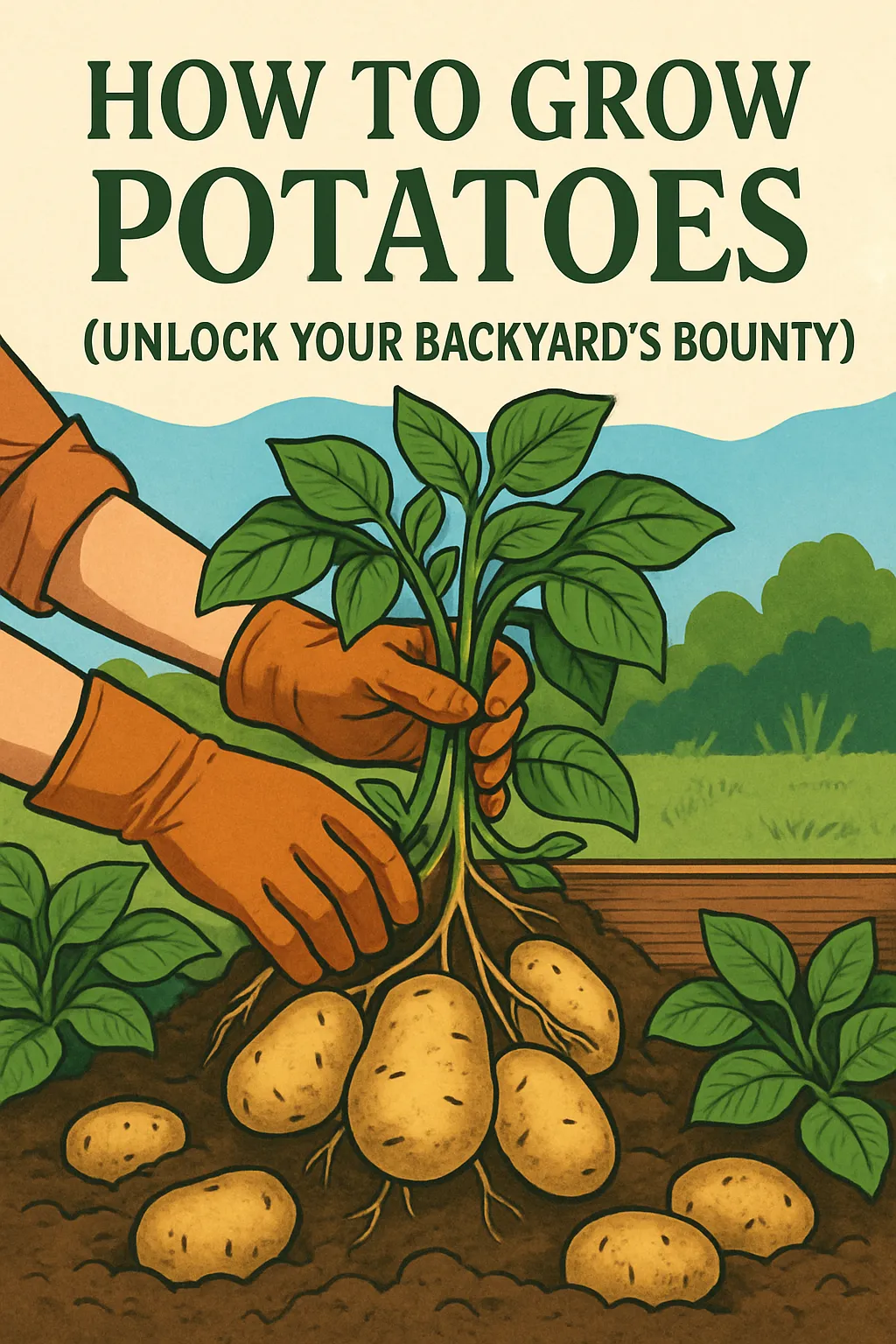Are you wondering how to grow potatoes successfully? This guide provides easy-to-follow steps for planting, caring for, harvesting, and storing your own delicious potatoes.

Potatoes are a dependable crop for gardeners. They are easy to grow and require little maintenance. Whether you are a beginner or an experienced gardener, potatoes can provide a plentiful harvest. This guide covers everything you need to know about planting, caring for, harvesting, and storing potatoes.
Understanding Potatoes
Potatoes (Solanum tuberosum) are cool-weather vegetables. They grow best in regions with moderate temperatures. In northern parts of the US, they tend to produce larger yields. In warmer areas, they can be grown in winter.
Potatoes belong to the nightshade family. This group includes tomatoes, eggplants, and peppers. The edible part is the underground tuber. Tubers develop from underground stems called stolons. They start forming when the plant reaches 6 to 8 inches tall.
Potatoes are rich in nutrients. They provide 45% of daily vitamin C and 18% of potassium. Gardeners can choose from over 100 different types. These vary in skin color, flesh texture, and taste.
Planting Potatoes
Choosing Seed Potatoes
Use certified seed potatoes that are disease-free. Store-bought potatoes may carry diseases or pests. Seed potatoes have multiple eyes, which are points from where new plants grow.
Before planting, chit seed potatoes. Place them in a bright, frost-free location. Let them sprout for about 4 weeks. This speeds up the time to harvest.
If you plant large potatoes, cut them into pieces. Each piece should have at least one eye. Allow cut pieces to dry for 48 hours. This reduces the chance of rot.
When to Plant
Plant potatoes 2 to 4 weeks before the last expected frost date. The soil temperature should be at least 45°F at night and 55°F during the day.
In warmer climates, plant from September to February. In colder areas, plant in March or April.
Soil and Sunlight Needs
Potatoes need full sun, which means at least 6 hours of direct sunlight daily. Use loose, well-draining soil. The optimal soil pH is 5.8 to 6.5, which is slightly acidic.
Prepare the soil by mixing in compost or organic matter. Good soil promotes healthy plant growth.
Methods of Planting
1. Traditional In-Ground Planting
Dig trenches about 6 inches deep. Space seed potatoes 12 to 18 inches apart. Cover with 2 to 3 inches of soil. Add more soil as plants grow.
2. Hilled Row Method
Plant potatoes in rows. As plants grow, mound soil around their base. This prevents sunlight exposure, which can turn tubers green and toxic.
3. Straw Cover Method
Place potatoes directly on the soil surface. Cover with straw. Add more straw as plants develop. This method reduces weeds and keeps tubers clean.
4. Container or Bag Planting
Ideal for limited space such as patios. Start with 4 inches of soil in a large container. Add seed potatoes. Cover and keep adding soil as plants grow.
Caring for Potato Plants
Watering
Provide 1 to 2 inches of water weekly. Too much water can cause rot. Reduce watering when foliage turns yellow. This signals that tubers are ready for harvest.
Hilling
Every two weeks, mound soil around the plants. This covers new tubers and prevents sunlight damage. Proper hilling increases yield.
Frost Protection
Use frost blankets or row covers to protect young plants from cold snaps and frost.
Harvesting and Storing Potatoes
When to Harvest
New potatoes are ready in 60 to 80 days. Wait until flowers bloom.
For mature potatoes, wait 90 to 130 days. Harvest when plant foliage turns yellow and dies back.
How to Harvest
Gently dig with a garden fork. Carefully lift the tubers. Avoid damaging them.
Curing and Storage
Allow harvested potatoes to cure in a cool, dry place for 1 to 2 weeks. This helps extend storage life.
Store potatoes in a cool (45-50°F), dark location. Keep them away from onions, which release gases that can spoil potatoes. Do not store potatoes in the refrigerator. Cold temperatures can turn starch into sugar, affecting their taste.
Popular Potato Varieties
Early-Season (60-80 days)
- Red Norland: Good for boiling. Has red skin.
- Irish Cobbler: Ideal for mashing.
Mid-Season (80-100 days)
- Yukon Gold: Has a rich, buttery flavor. Golden flesh.
- Red Pontiac: Easy to grow and adaptable.
Late-Season (100-130 days)
- Kennebec: Produces high yields and stores well.
- Elba: Resistant to common potato diseases.
Tips for Success
- Practice crop rotation every year to reduce soil diseases.
- Test soil pH regularly and make amendments when needed.
- Choose disease-resistant varieties for better harvests.
- Try different potato types to discover your favorites.
Final Tips
Growing potatoes can be very rewarding. Proper care, good soil, and patience lead to delicious homegrown potatoes. Enjoy the process and your harvest.
Improve your gardening skills with these tips. Grow a healthy and abundant potato crop this season. Happy planting!